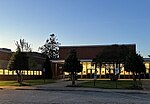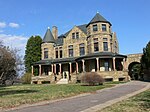Forest Hill Historic District (Richmond, Virginia)

The Forest Hill Historic District is a national historic district located at Richmond, Virginia. The district encompasses 1,106 contributing buildings and 5 contributing structures located south of downtown Richmond. The primarily residential area developed starting in the early-20th century as one of the city's early "streetcar suburbs." The buildings are in a variety of popular late-19th and early-20th century architectural styles including frame bungalows, Colonial Revival, Tudor Revival, and Mission Revival. The buildings in Forest Hill exemplify a high quality of materials in their construction. Brick is the dominant building material. Notable non-residential buildings include Forest Hill Presbyterian Church; Good Shepherd Episcopal Church; and Forest Hill Church of Christ.It was added to the National Register of Historic Places in 2012.
Excerpt from the Wikipedia article Forest Hill Historic District (Richmond, Virginia) (License: CC BY-SA 3.0, Authors, Images).Forest Hill Historic District (Richmond, Virginia)
Forest Hill, Richmond Forest Hill
Geographical coordinates (GPS) Address Nearby Places Show on map
Geographical coordinates (GPS)
| Latitude | Longitude |
|---|---|
| N 37.52 ° | E -77.474444444444 ° |
Address
Forest Hill
Forest Hill
23249 Richmond, Forest Hill
Virginia, United States
Open on Google Maps









